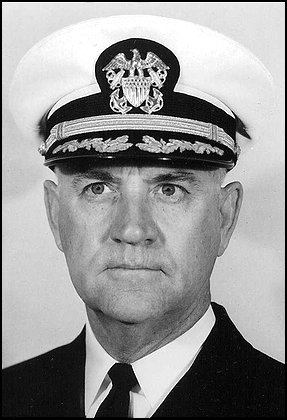From a contemporary press report:
Paul Henry Barkley, 88, a retired Navy Captain who spent more than 30 years at sea and commanded a wooden minesweeper, a cargo ship, a destroyer and a command ship, died of lung cancer April 28, 2005, at the National Naval Medical Center in Bethesda. He was a McLean resident.
As a young ensign, he participated in one of the bloodiest battles of the Pacific during World War II. As a commander 20 years later, he directed a ship that delivered Marines to Guantanamo Bay during the Cuban Missile Crisis.
Captain Barkley was an ensign aboard the destroyer Ringgold when it participated in the invasion of the Pacific atoll Tarawa. Captain Barkley told the Navy Times last month that his ship was assigned to the lagoon within view of the Japanese.
“It was a mess,” he said. “There were no charts available for the lagoon. However, Navy found a New Zealand Royal Navy Reserve officer who had skippered small freighters, and he knew the lagoon like the back of his hand. Yes, he did! He took control of our beautiful destroyer and promptly put her aground 500 yards broadside from the beach.”
Firmly stuck, the crew spent three days and two nights firing the five five-inch gun batteries at the Japanese shore batteries 700 yards away.
It was not Captain Barkley's first time in battle. The native of Waxahachie, Texas, had enlisted in 1939 and served aboard the minelayer Terror during the World War II invasion of North Africa.
His crew mates called him “the gray ghost” because he was about a decade older than the other sailors and because he had a habit of appearing suddenly at unexpected places aboard ship.
Before he joined the military, he attended San Antonio's Trinity College for two years, worked in the Civilian Conservation Corps and was a member of the Texas National Guard. In 1941, he attended electronics school at the Naval Research Laboratory in Washington.
Perhaps because of his advanced electronics training, his son said, Captain Barkley was moved from one newly launched ship to another throughout his Navy career.
Later in World War II, Captain Barkley also served aboard the destroyers Bearss and Leary in the Pacific. After the war, he attended classes and taught at the Navy's Postgraduate School in Monterey, California.
His first command came in 1955 on the Observer, a wooden minesweeper. After a year at the Armed Forces Staff College, he was named commodore of a group of minesweepers. He spent two years at the U.S. Embassy in Bonn before becoming executive officer of the amphibious cargo ship Capricornus, the first ship to offload Marines and equipment in Guantanamo Bay during the 1962 Cuban Missile Crisis.
Captain Barkley returned to the USS Leary in 1963, then served at the Pentagon until 1968 and skippered the command ship Pocono. His last assignment was with the Joint Chiefs of Staff at the Pentagon, where he worked with strategic plans and policies, including the Strategic Arms Limitation Talks. He retired from the military in 1972.
He bought and sold the Arlington company Douglas Plumbing and Heating, operated a firm that converted bathtubs to spas, and ran a wholesale company that sold German food processors. He also imported copper and china from South America and briefly ran a modular housing factory on the Eastern Shore of Maryland.
Captain Barkley was a Mason and a Shriner, and he was a volunteer chaplain at Inova Fairfax Hospital. He was a member of Charles Wesley United Methodist Church in McLean. In retirement, he enjoyed cooking and baking, often giving away his homemade pies.
His wife of 56 years, Marguerite A. Barkley, died in 2001.
Survivors include a son, Paul A. Barkley of Takoma Park; a sister; and a granddaughter.
NOTE Captain Barkley and his wife, Marguerite Alma E. Barkley, will be laid to rest at Arlington National Cemetery on 18 July 2005.
Michael Robert Patterson was born in Arlington and is the son of a former officer of the US Army. So it was no wonder that sooner or later his interests drew him to American history and especially to American military history. Many of his articles can be found on renowned portals like the New York Times, Washingtonpost or Wikipedia.
Reviewed by: Michael Howard

